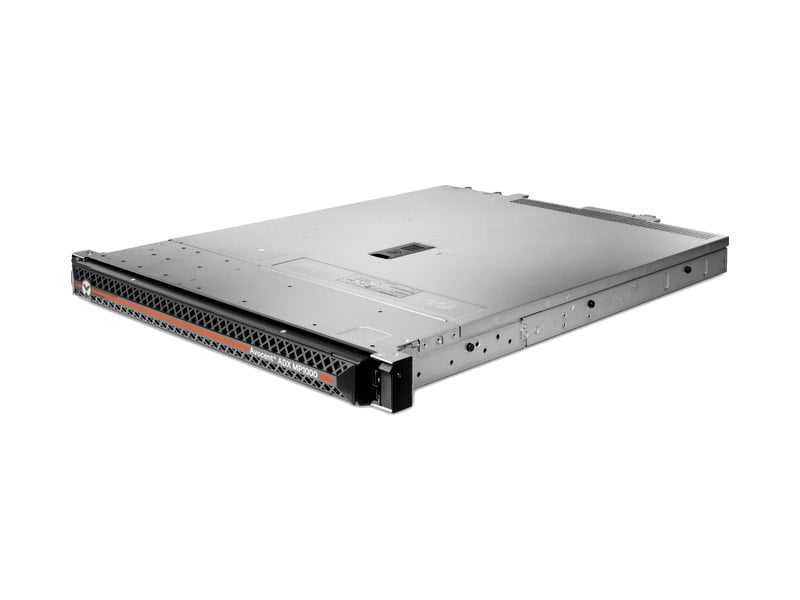New models are designed to cut costs and streamline deployment
Columbus, Ohio [October 19, 2021] – Vertiv (NYSE: VRT), a global provider of critical digital infrastructure and continuity solutions, today released the results of an in-depth research project to identify edge infrastructure models to help organizations move toward a more standardized approach to edge computing deployments, with the intent to improve costs and deployment times.
The report, Edge Archetypes 2.0: Deployment-Ready Edge Infrastructure Models, builds on the edge archetypes research and taxonomy Vertiv introduced to the industry in 2018. The new research further categorizes edge sites based on factors including: location and external environment, number of racks, power requirements and availability, site tenancy, passive infrastructure, edge infrastructure provider, and number of sites to be deployed.
- Device Edge: The compute is at the end-device itself, either built into the device or in a standalone form that is directly attached to the device, such as AR/VR devices or smart traffic lights.
- Micro Edge: A small, standalone solution that can range in size from one or two servers up to four racks. It can be deployed at the enterprise’s own site, or could be deployed at a telco site, with common cases including real-time inventory management and network closets in educational facilities.
- Distributed Edge Data Center: This could be within an on-premise data center (either a pre-existing enterprise data center or network room or a new standalone facility). It also could be a small, distributed data center or colocation facility located on the telco network or at a regional site. Distributed Edge Data Centers are currently common in manufacturing, telecommunications, healthcare and smart city applications.
- Regional Edge Data Center: A data center facility located outside core data center hubs. As this is typically a facility that is purpose-built to host compute infrastructure, it shares many features of hyperscale data centers e.g. is conditioned and controlled, has high security and high reliability. This model is common for retail applications, and serves as a intermediary data processing site.
The introduction of edge archetypes three years ago advanced the understanding of the edge. It was the first formal attempt – using information gathered across the industry – to group edge applications in a way that would help organizations avoid reinventing the wheel with every edge deployment. Since then, other organizations and industry bodies have been working in parallel – and often with Vertiv as a collaborator – to create standard processes and technologies to advance the understanding and effectiveness of the edge. These latest edge infrastructure models represent the logical next step.
“As the edge matures and edge sites proliferate and become more sophisticated, creating edge infrastructure models is a necessary step toward standardized equipment and design that can increase efficiency and reduce costs and deployment timelines,” said Martin Olsen, global vice president, edge strategy and transformation for Vertiv. “Edge sites will continue to require some customization to meet users’ specific needs, but these models streamline many fundamental choices and introduce some much-needed repeatability into edge environments. This research is especially useful for specifiers, such as channel partners, and IT management professionals.”
The research, developed with the support of analyst firm STL Partners, makes clear that edge sites will require refinements based on factors that may include environment, use case, legacy equipment, security and maintenance, enterprise data center operations, and communications capabilities. These adjustments are possible within the framework of the edge infrastructure models, however, and do not diminish the benefits of standardization the models provide.
“By adopting the four infrastructure models, edge players across the ecosystem can derive an array of benefits, including accelerating go-to-market and expediting deployment of sites,” said Dalia Adib, director, consulting and edge computing practice lead, STL Partners. “The edge market is experiencing growth and this can only be bolstered by introducing some level of standardization to the language we use for describing the edge.”
The report also examines the edge infrastructure requirements of some key verticals, including manufacturing, retail, and telecommunications, and assesses their preferred edge infrastructure models. In addition to identifying edge infrastructure models, the report provides recommendations for enterprises and solution providers deploying edge infrastructure.
Vertiv also developed an online tool to help customers, channel partners and others who plan, select and deploy edge sites to determine the appropriate infrastructure model for their applications. The report and tool are available at Vertiv.com/EdgeArchetypes.
About Vertiv
Vertiv (NYSE: VRT) brings together hardware, software, analytics and ongoing services to ensure its customers’ vital applications run continuously, perform optimally and grow with their business needs. Vertiv solves the most important challenges facing today’s data centers, communication networks and commercial and industrial facilities with a portfolio of power, cooling and IT infrastructure solutions and services that extends from the cloud to the edge of the network. Headquartered in Columbus, Ohio, USA, Vertiv employs approximately 21,000 people and does business in more than 130 countries. For more information, and for the latest news and content from Vertiv, visit Vertiv.com.
Forward-Looking Statements
This release contains forward-looking statements within the meaning of the Private Securities Litigation Reform Act of 1995, Section 27 of the Securities Act, and Section 21E of the Securities Exchange Act. These statements are only a prediction. Actual events or results may differ materially from those in the forward-looking statement set forth herein. Readers are referred to Vertiv’s filings with the Securities and Exchange Commission, including its most recent Annual Report on Form 10-K/A and any subsequent Quarterly Reports on Form 10-Q for a discussion of these and other important risk factors concerning Vertiv and its operations. Vertiv is under no obligation to, and expressly disclaims any obligation to, update or alter its forward-looking statements, whether as a result of new information, future events or otherwise.
CONTACT
Sara Steindorf
T +314-982-1725
E sara.steindorf@fleishman.com





